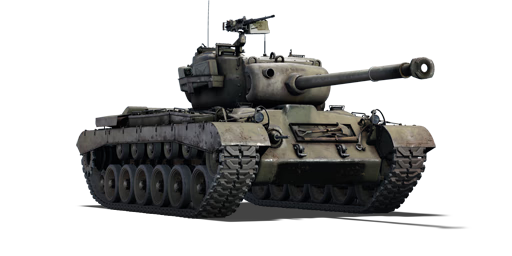The end of World War II left the US Army in a state of demobilization, with budget cuts interfering with many of the US Army's projects, including those aiming to continually improve the tank fleet that began seeing the M26 Pershing put into the service. Without the funds for a major overhaul, it was decided to modernize their existing M26s in 1946. The first prototype was created in 1948, with the project large enough that by its acceptance it was designated the M46. The M46 would see itself put into action sooner than expected with the outbreak of the Korean War in 1950, where it served alongside its predecessors against Korean and Chinese troops. By the end of the war, with newer tanks like the M47 coming into service, the M46 was retired from US service but continued to serve for a few more years as foreign aid.
The M46, introduced with the American ground tree in Update 1.45 "Steel Generals", is an improved version of the M26 Pershing. The two biggest shortcomings of the M26, the mobility and firepower, have been improved on to allow a better player experience with the tank. The M46 can stand up against most enemies it faces with the improved firepower of the HEAT-FS shell, but should take care that the enemy doesn't get the first shot off as the armour remains the same otherwise.















